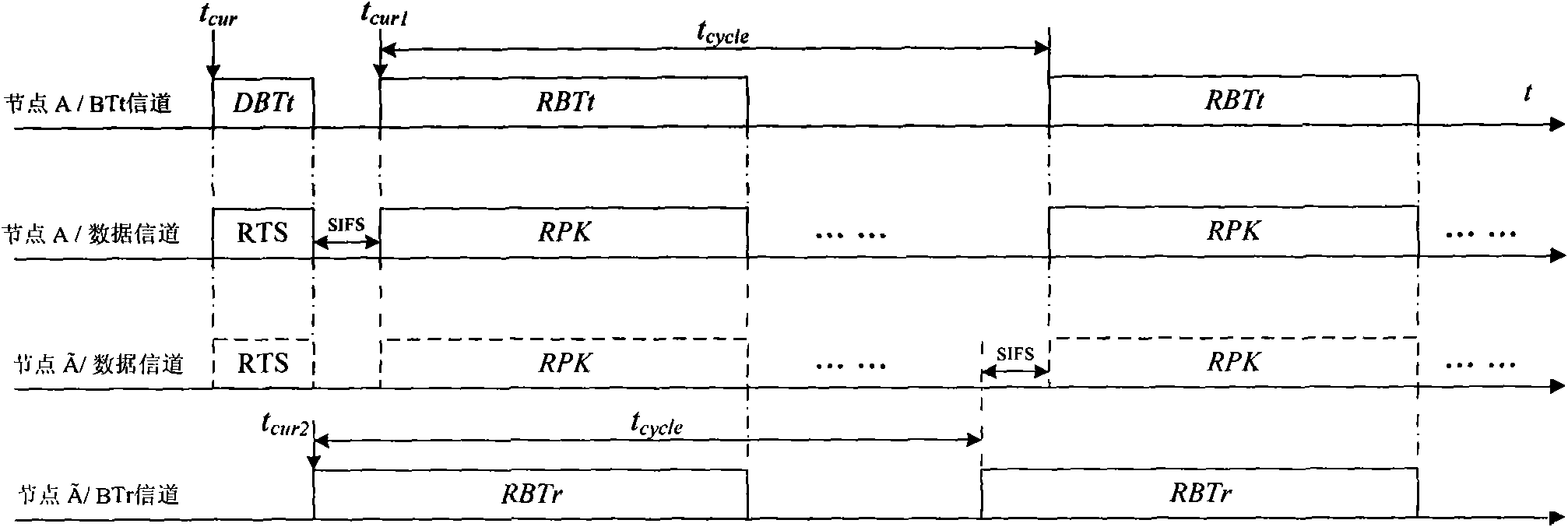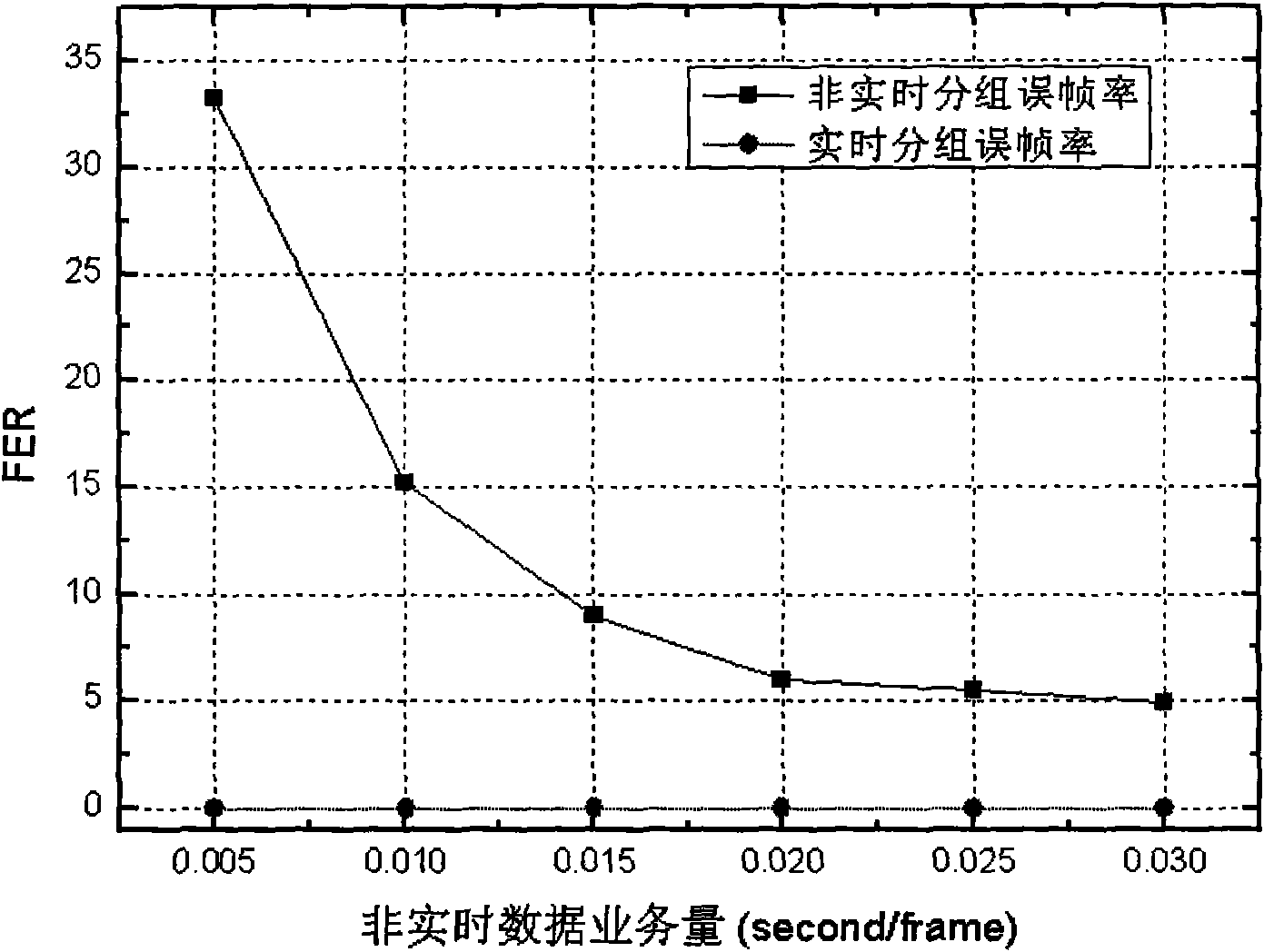Channel reservation method based on double busy tone mechanism in wireless self-organizing network
A wireless self-organizing network and channel reservation technology, applied in the field of communication, can solve the problems of unsuccessful transmission, packet collision, and reservation failure, so as to overcome channel instability and hidden terminals, reduce real-time packet frame error rate, and improve stability. Effect
- Summary
- Abstract
- Description
- Claims
- Application Information
AI Technical Summary
Problems solved by technology
Method used
Image
Examples
Embodiment Construction
[0060] Generally speaking, the method can be implemented in the driver program of the wireless access network card. In the following, it will be described in detail in combination with examples.
[0061] In order to support the channel reservation mechanism based on the busy tone signal, this patent defines four types of busy tone signals: RBTt, RBTr, DBTt, DBTr. Among them, the first two are real-time busy tones, and the latter two are non-real-time busy tones. RBTt and DBTt broadcast on the sending busy tone channel, and RBTr and DBTr broadcast on the receiving busy tone channel. In order to enable nodes to distinguish two kinds of busy tone (real-time busy tone and non-real-time busy tone) signals broadcast on the same busy tone channel, we have specially defined these two kinds of busy tone channels and four kinds of busy tone.
[0062] Referring to the IEEE 802.11a standard, this patent defines the center frequency of the data channel as 5.29GHz and a bandwidth of 20MHz;...
PUM
 Login to View More
Login to View More Abstract
Description
Claims
Application Information
 Login to View More
Login to View More - R&D Engineer
- R&D Manager
- IP Professional
- Industry Leading Data Capabilities
- Powerful AI technology
- Patent DNA Extraction
Browse by: Latest US Patents, China's latest patents, Technical Efficacy Thesaurus, Application Domain, Technology Topic, Popular Technical Reports.
© 2024 PatSnap. All rights reserved.Legal|Privacy policy|Modern Slavery Act Transparency Statement|Sitemap|About US| Contact US: help@patsnap.com










